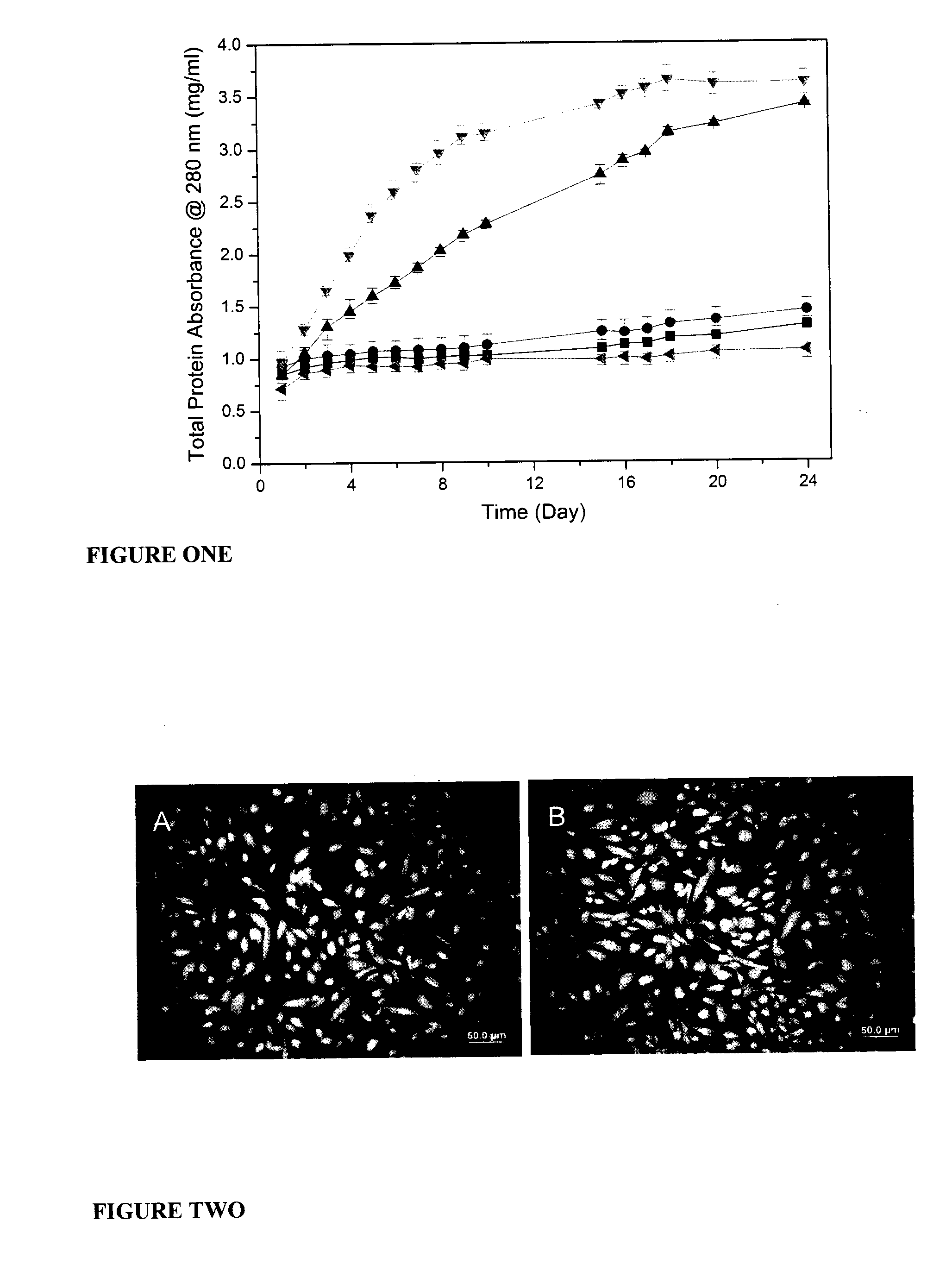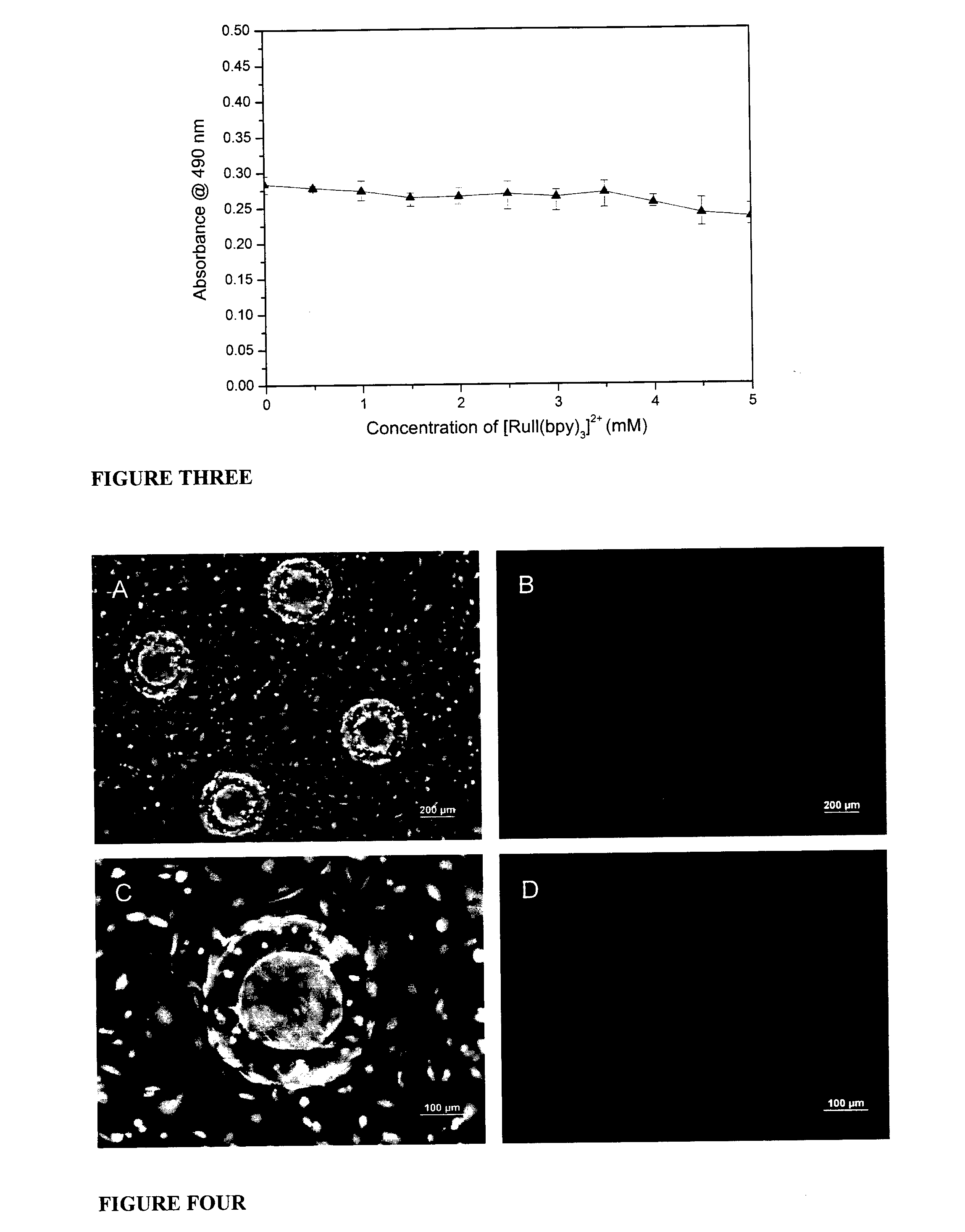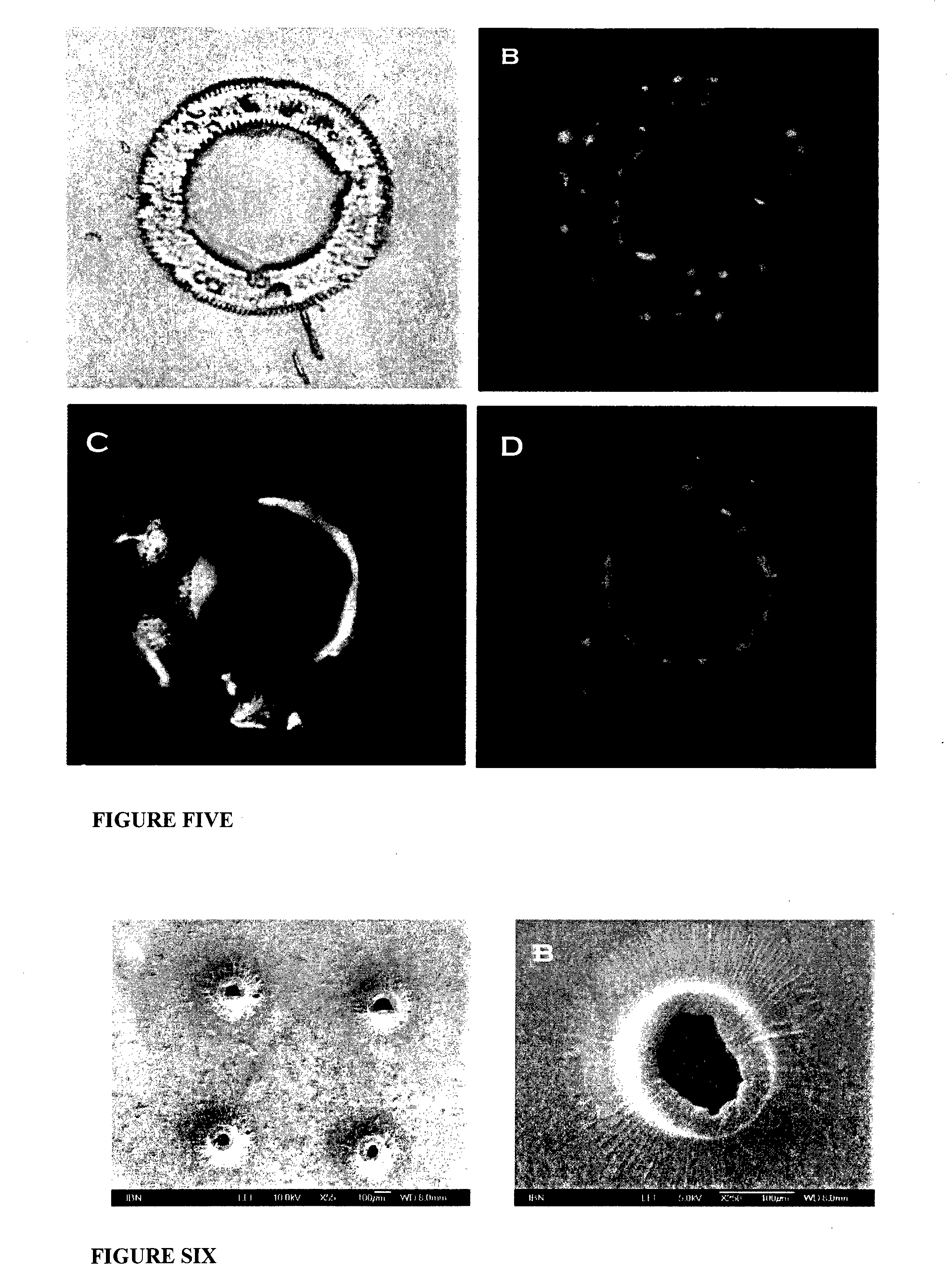Microfabricated scaffold structures
a microfabricated and scaffold technology, applied in the field of tissue engineering, can solve the problems of uneven cell density distribution of cells seeded on acellular 3d scaffolds, affecting the construction of 3d scaffolds, and other problems, and achieve the effect of simple and flexible methods
- Summary
- Abstract
- Description
- Claims
- Application Information
AI Technical Summary
Benefits of technology
Problems solved by technology
Method used
Image
Examples
example 1
Preparation of Three-Dimensional Microstructured Tissue Scaffold with Encapsulated Cells by Two-Photon Laser Scanning Photolithography
Materials and Methods
[0130]Preparation of Crosslinkable Fibrinogen Mixture
[0131]A photochemical cross-linking method was used to polymerize fibrinogen (see, method described in Elvin et al. (2004), “The development of photochemically crosslinked native fibrinogen as a rapidly formed and mechanically strong surgical tissue sealant”, Biomaterials, 25:2047-5). 15 mg of fibrinogen powder (bovine, Type 1-S; Sigma Aldrich) was weighed in a tube. Sodium persulfate (SPS) (Sigma Aldrich) was freshly prepared as a stock solution of 0.5 M in PBS. The photoinitiator, [Rull(bpy)3]2+ (Sigma Aldrich), was prepared as a stock solution of 50 mM in tissue culture grade water. 2 μl of SPS from the stock solution was then diluted to a final working solution of 10 mM by adding 100 μl of PBS solution. The entire volume of the working solution was added to 15 mg of fibrinog...
example 2
Preparation of Three-Dimensional Microstructured Tissue Scaffold with for Cell Seeding by Two-Photon Laser Scanning Photolithography
Materials and Methods
[0156]Fabrication of 3D Scaffolds by TPLSP
[0157]The photocurable polymer (Accura™ SI10) was obtained from 3D Systems (Rock Hill, S.C., USA). The desired scaffold was designed using CAD software (FIG. 9), and generated in a stereolithography system with a galvanometric mirror scanner (Scanlabs, Munich, Germany). An isolator was placed in front of the laser aperture to prevent reflected laser light from returning to the laser cavity. An acousto-optic modulator (AOM) served as a high-speed shutter for the system. The beam expander (Scanlabs, Munich, Germany) acted as the on-the-fly focusing module to automatically correct for any plane distortion. Axial control of the scanned structures was provided by a high-resolution elevation stage (Newport, Irvine, Calif., USA) that stepped with each slice of exposure. Localized polymerization wou...
PUM
 Login to View More
Login to View More Abstract
Description
Claims
Application Information
 Login to View More
Login to View More - R&D
- Intellectual Property
- Life Sciences
- Materials
- Tech Scout
- Unparalleled Data Quality
- Higher Quality Content
- 60% Fewer Hallucinations
Browse by: Latest US Patents, China's latest patents, Technical Efficacy Thesaurus, Application Domain, Technology Topic, Popular Technical Reports.
© 2025 PatSnap. All rights reserved.Legal|Privacy policy|Modern Slavery Act Transparency Statement|Sitemap|About US| Contact US: help@patsnap.com



